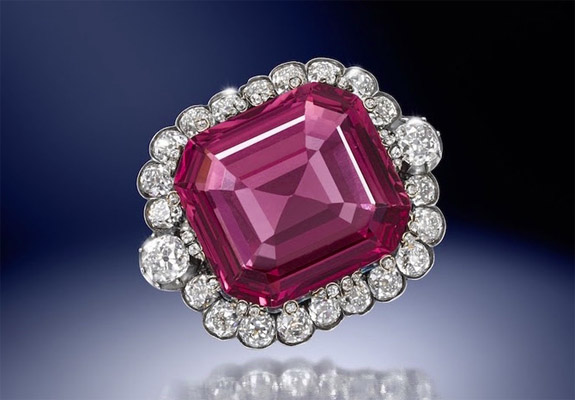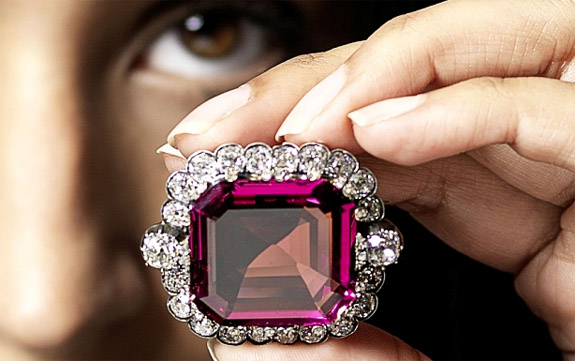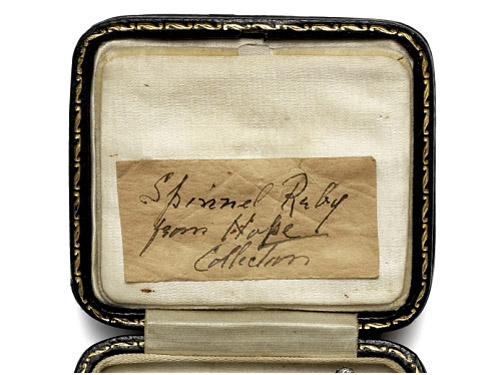A rare and flawless gemstone from the fabled Hope Collection is set to hit the auction block at Bonhams London for the first time in 98 years. The 50.13-carat Hope Spinel is the lesser-known cousin of the 45.52-carat Hope Diamond, arguably the most famous gem of all time.

Both the Hope Spinel and the Hope Diamond were part of a fabulous collection amassed by London banker Henry Philip Hope, who died in 1839.
When the Hope Spinel was offered for sale nearly 100 years ago, it sold for about $1,600, the equivalent of $32,000 in today's dollars. Bonhams expects the gem to fetch between $230,000 and $308,000 when it goes under the hammer on September 24 at the auction house's London Fine Jewelry sale. By contrast, the Hope Diamond, which resides in the Smithsonian, is said to be worth at least $250 million.

About the size of a small plum and displaying a pretty rose hue, the octagonal-cut Hope Spinel is set in a 19th century silver and gold brooch.
"You just don't see pieces of this quality and provenance on the open market very often. It's very exciting," said Emily Barber, UK Jewelry Department Director at Bonhams.
The auction house revealed in its sale preview notes that the Hope Spinel was such an important part of Hope's gem collection that it shared a space in the very special 16th drawer of his bespoke mahogany cabinet, right next to the Hope Diamond, the Hope Pearl (then the largest baroque natural pearl known) and an emerald from the turban of Tipu Sultan.

Throughout history, spinel has been widely mistaken for ruby because the gemstones present in similar colors and are found in similar rock formations. The confusion is confirmed in a hand-written note affixed to the Hope Spinel's well-worn jewelry box. It contains the phrase, "Spinnel Ruby from Hope Collection."
Henry Philip Hope was from a dynasty of incredibly rich and powerful merchant bankers. By the end of the 18th century, the Amsterdam-based Hope family ran one of the most powerful banks in the world.
Hope moved to the UK at the end of the 18th century to escape political upheaval and settled in London with his elder brother. Together, they invested in valuable art and rare gems, establishing one of the most impressive collections ever known.
Henry Philip Hope decided to leave his works of art and gemstones out of his will and secretly gifted the 700 pieces — including both the Hope Diamond and the Hope Spinel — to one of his three nephews in order to avoid death duties.
That strategy backfired when, after Hope's death in 1839, the Hope Collection became the center of a decade-long inheritance battle. In the end, the Hope Spinel and a number of the most valuable gems were separated from the collection to help resolve the conflict.
In the end, the younger nephew Alexander Beresford-Hope inherited most of the collection, but his elder brother, Henry Thomas Hope, received eight valuable stones, including the Hope Blue Diamond and the Hope Spinel.
Photos courtesy of Bonhams.
No comments:
Post a Comment